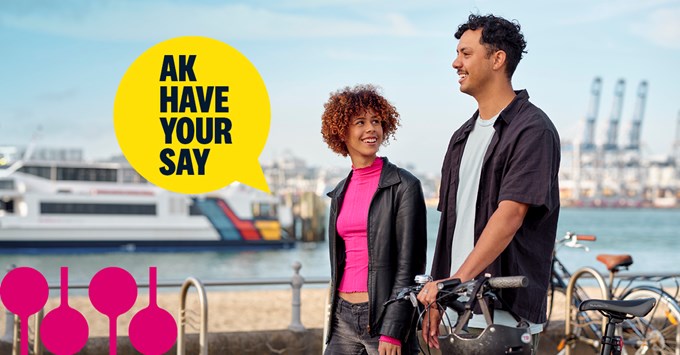The proposal
The effects of climate change are becoming more evident every day; one in 100 years events are occurring more frequently, and each of us have felt or witnessed the impacts in one way or another.
The adoption of Te Tāruke-Ā-Tāwhiri: Auckland’s Climate Action Plan cemented the council’s commitment to combatting climate change, but we know that the level of change needed requires difficult decisions, and significant investment, to be made.
That’s why in this year’s Annual Budget, we are proposing a Climate Action Targeted Rate (CATR) to do more, particularly in the transport sector given that 43.4 per cent of Auckland’s regional emissions are from transport.
If adopted, the funds raised by the rate will be ring-fenced for projects that will have a meaningful impact on our climate action goals.
The projects will meet four clear criteria – they must be high impact, have wide regional benefits, address inequity and start quickly.
The Climate Action Targeted Rate package will provide much greater access to efficient and reliable low-carbon public transport and provide safe, convenient and well-connected walking and cycling options for more Aucklanders. It will also invest in planting more trees in parks and on streets to prepare for a warmer future and subsequently reduce our vulnerability to extreme heat.
See below what the money from the CATR would be used for.
Public transport
Buses
The Climate Action Targeted Rate (CATR) would help to fund:
- 10 new frequent bus routes servicing South Auckland, West Auckland, Ōrakei, Tamaki and New Lynn to Onehunga via Mount Roskill. There will also be an extension to the frequent service on the Northern Express up to Hibiscus Coast station.
- Improvements to 69 existing bus routes to increase the frequency of bus services.
- An additional 79 electric or hydrogen buses.
These changes will ensure that over a million Aucklanders will be within 500 metres of an improved bus service, and 170,000 more people will be within 500 metres of a frequent bus route, making public transport a more appealing and convenient option. Frequent services run at least every 15 minutes from 7am – 7pm seven days a week and at least every 30 minutes from 6am – 7am and 7pm – 11pm.
Ferry
In addition to improved bus services, the CATR would also help to fund:
- 6 – 7 additional low emissions ferries
- Wharf upgrades, including charging infrastructure.
Active network
Cycling
We know that to make a noticeable difference to our emission levels, we need to get more people out of their cars and using more active modes of transport such as cycling and walking.
The CATR would help fund the completion of key links in the current and planned separate cycling network, improving connections to schools and jobs in the North Shore, Manurewa, Onehunga, Hobsonville and New Lynn.
Walking
The rate will fund up to 35kms of walking connectivity improvements, including improvements to footpaths, additional pedestrian crossings, improved accessibility and increased pedestrian lighting in key locations across Auckland.
A specific focus will be put on improving the safety and ease of walking in the Manurewa area.
Urban Ngahere (forest)
Auckland’s Urban Ngahere (Forest) Strategy recognises the social, environmental, economical and cultural benefits of our urban ngahere, and sets out a strategic approach to growing and protecting it.
The strategy has a goal to increase the average canopy cover to 30 per cent across Auckland‘s urban area, with no local board area having less than 15 per cent canopy cover.
Funds from the CATR have been set aside to contribute to the council’s work on growing the urban ngahere, with a focus on planting trees in areas that need them most. This includes planting almost 15,000 specimen trees in parks and on streets to provide cooling and shade in areas most vulnerable to extreme heat, and with the lowest canopy cover.
The rate would also fund:
- Over 4,000 trees/plants to establish tiny forests in parks, food forests and māra kai (including fruit tree planting) and expand bush remnants
- Grants for rongoā planting
Over $1 billion of investment in climate action initiatives is proposed, with the Climate Action Targeted Rate raising $574 million over the next ten years and unlocking government co-funding and additional fare revenue. If adopted, the CATR would cost the median value urban residential property $58 a year ($1.12 per week).
Have your say
Feedback on the Annual Plan was submitted between 28 February 2022 and 28 March 2022.
Following this consultation, all feedback will be considered, then the Annual Budget 2022/23 will be adopted in June 2022. Decisions will be widely communicated, and a summary report of the budget will be available online.


